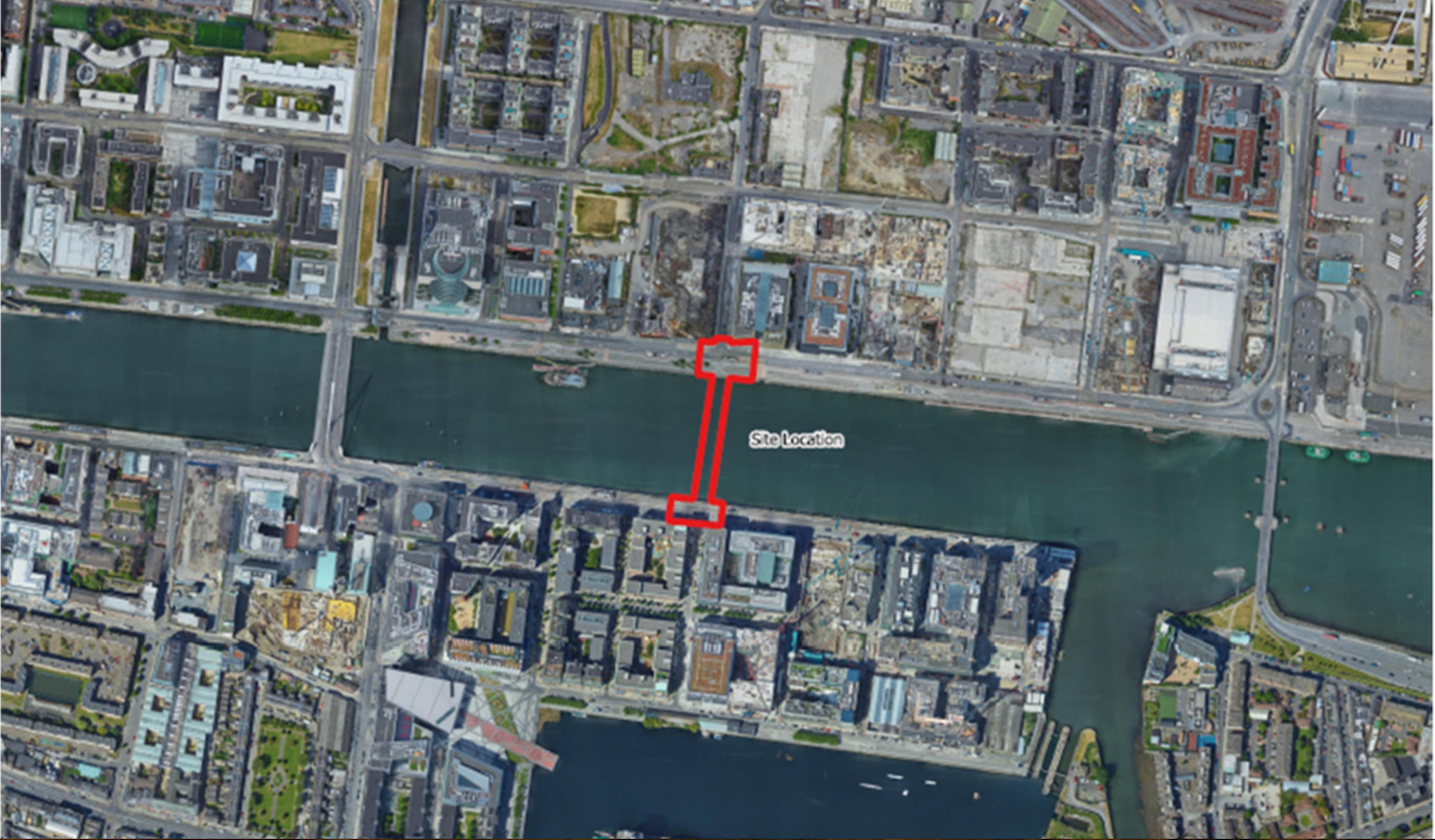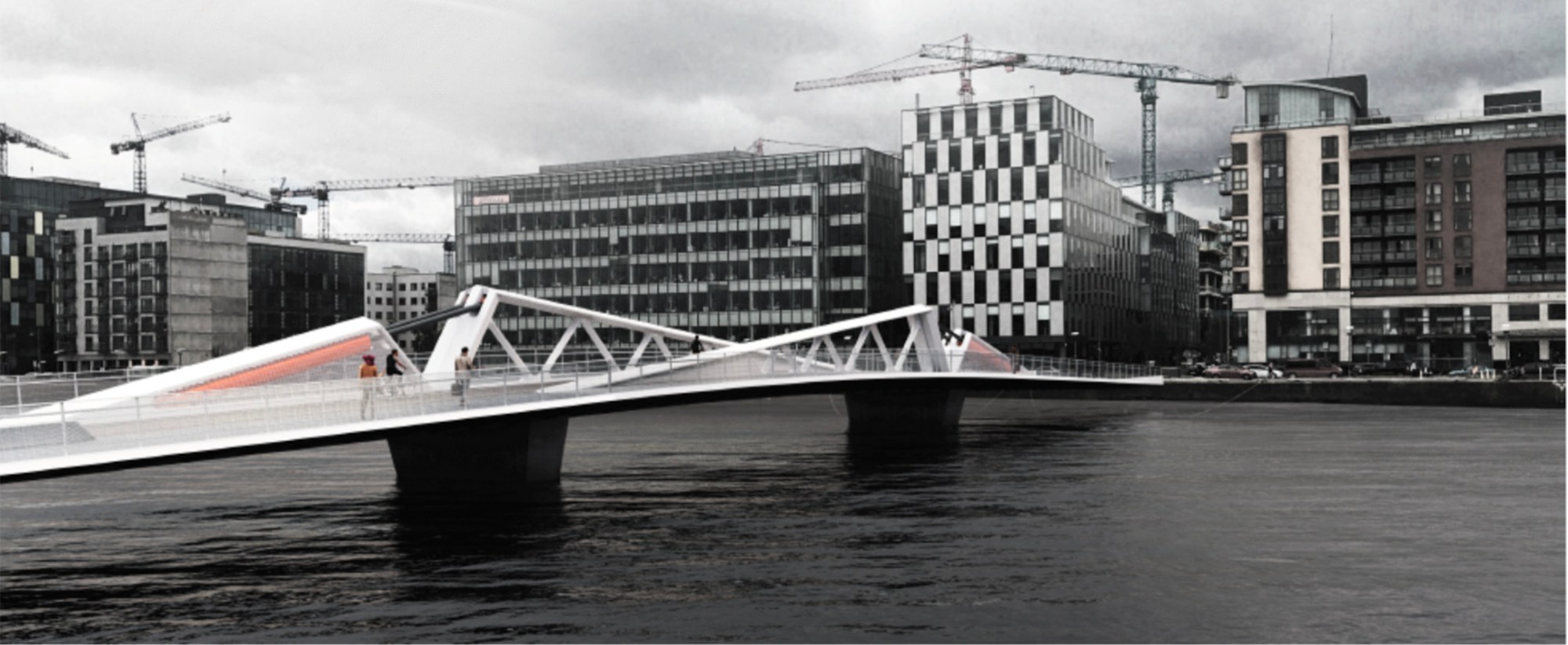What’s the best way to tell area residents about plans for a new asylum shelter nearby?
The government should tell communities directly about plans for new asylum shelters, some activists and politicians say.
Blood Stoney Bridge would stretch about 125 metres across the river from Sir John Rogerson’s Quay to North Wall Quay.

Dublin City Council has released new plans for a pedestrian and cycling bridge spanning the River Liffey in the Docklands, which it is calling the Blood Stoney Bridge.
If built, it would stretch about 125 metres across the river from Sir John Rogerson’s Quay at Blood Stoney Road on the south said, to North Wall Quay at New Wapping Street on the north side.
The bridge would have a 4-metre-wide segregated cycleway, plus two 3-metre-wide footpaths, the report says. It would be able to lift up and open so boats could pass underneath.

With the Samuel Beckett and Tom Clarke bridges set relatively far apart, pedestrians and cyclists have faced long detours when trying to cross from one side of the city to the other. The plan for the Blood Stoney Bridge is intended to solve that, the report says.
The plans for the bridge have changed slightly over time, notes a council report up for discussion at today’s meeting of Dublin City Council’s transport committee.
An earlier plan was for the bridge to go from Forbes Street to Park Lane, as part of the North Lotts and Grand Canal Strategic Development Zone Planning Scheme.
That, though, would have interfered with plans for the DART underground, the report says. So that site was rejected by the Dublin City Council and the National Transport Authority.
Putting the bridge at Blood Stoney Road deals with that – and traffic modelling predicts high usage for it there, the report says.
The Samuel Beckett and Tom Clarke bridges are not only quite far from where this crossing would be, but “primarily vehicular crossings and are already operating at full capacity for pedestrian and cyclists at peak times”, the report says.

The road received the name “Blood Stoney” after Bindon Blood Stoney, an engineer responsible for designing the quay walls of the River Liffey, according to the Come Here to Me! history blog. He worked as the chief engineer to Dublin Port and the Docks Board from 1852 to 1898.
Councillors have so far welcomed the plans. “I think any extra provision for cycling for crossing the Liffey will help reduce the conflict between pedestrians and cyclists which is only a good thing,” says Green Party Councillor Patrick Costello.
Costello points to Grattan Bridge – further west between Capel Street and Parliament Street – as an example of the trouble cyclists can have. On that bridge, there are many cars headed in different ways, switching lanes, says Costello. “It can be awkward as a cyclist or you can find yourself trapped between two cars.”
Independent Councillor Christy Burke, who chairs the transport committee, said: “If you look at the couple of bridges that are gone in over the past number of years they are a great asset,” he said.
The council plans to apply to An Bord Pleanála for permission in early 2020, subject to receiving approval for an amendment to the North Lotts and Grand Canal SDZ Planning Scheme, the council report says.
“Assuming the scheme is approved, it is anticipated that construction will start in mid-2021 and will take approximately 18 months to complete,” it says.

Get our latest headlines in one of them, and recommendations for things to do in Dublin in the other.